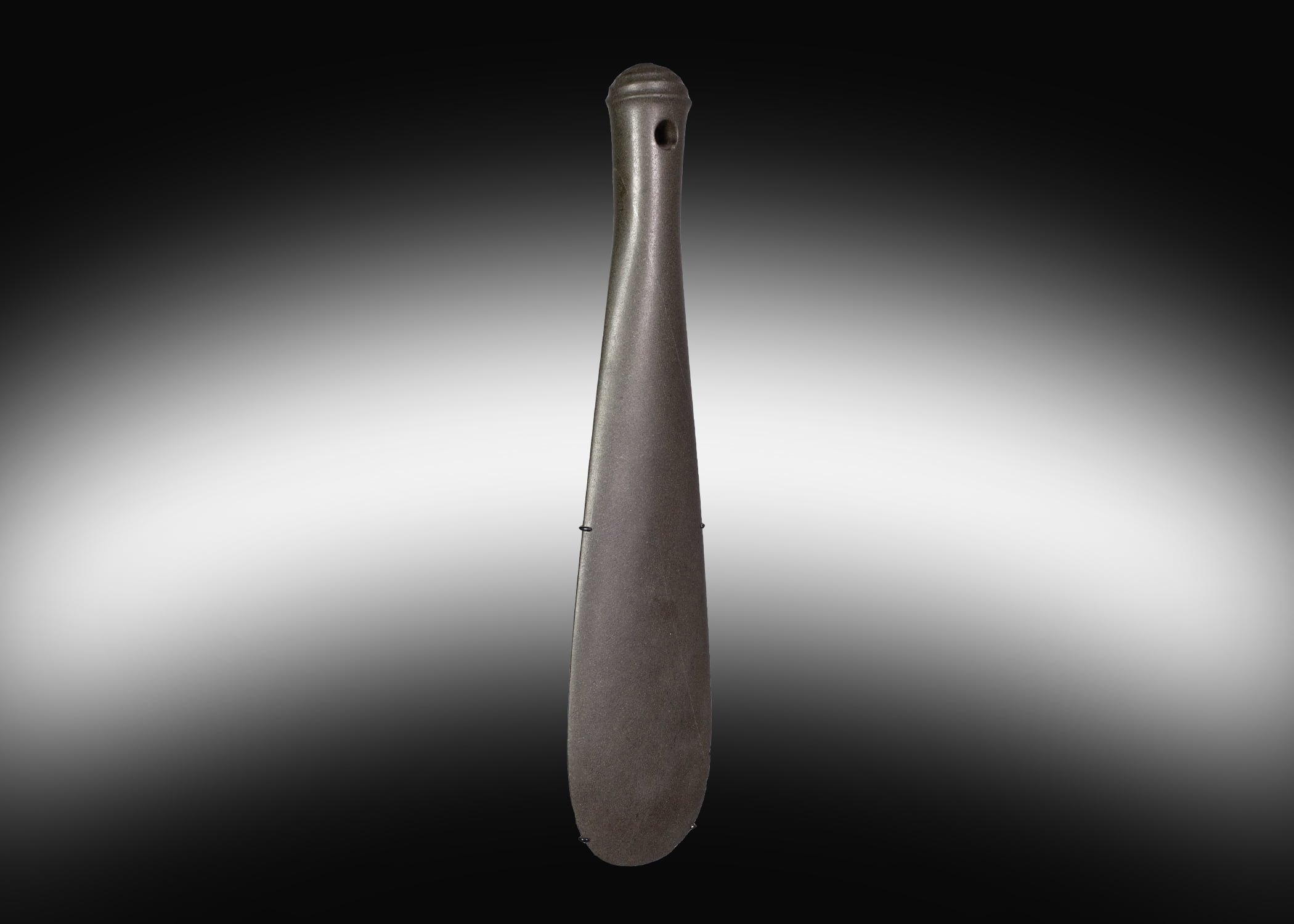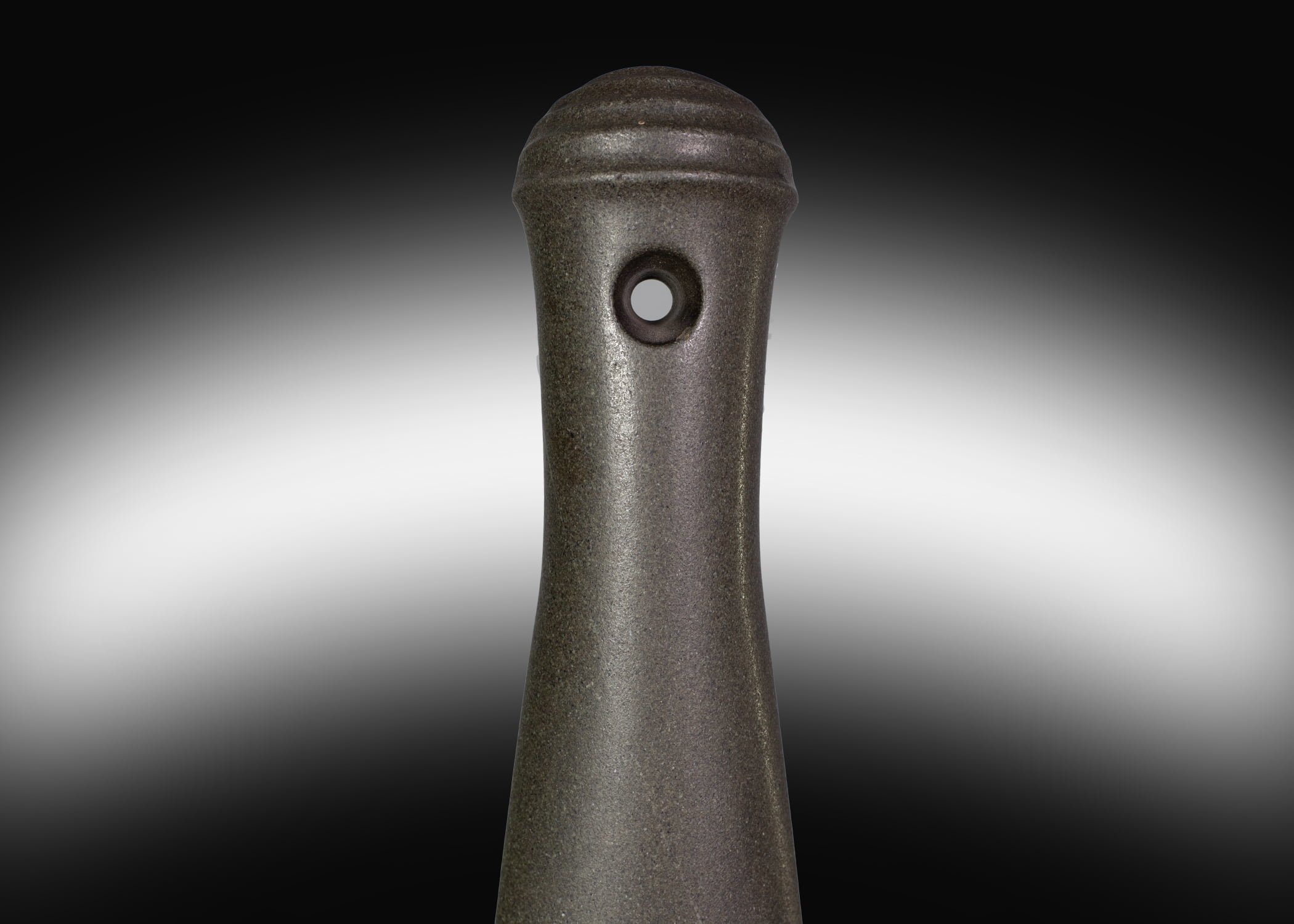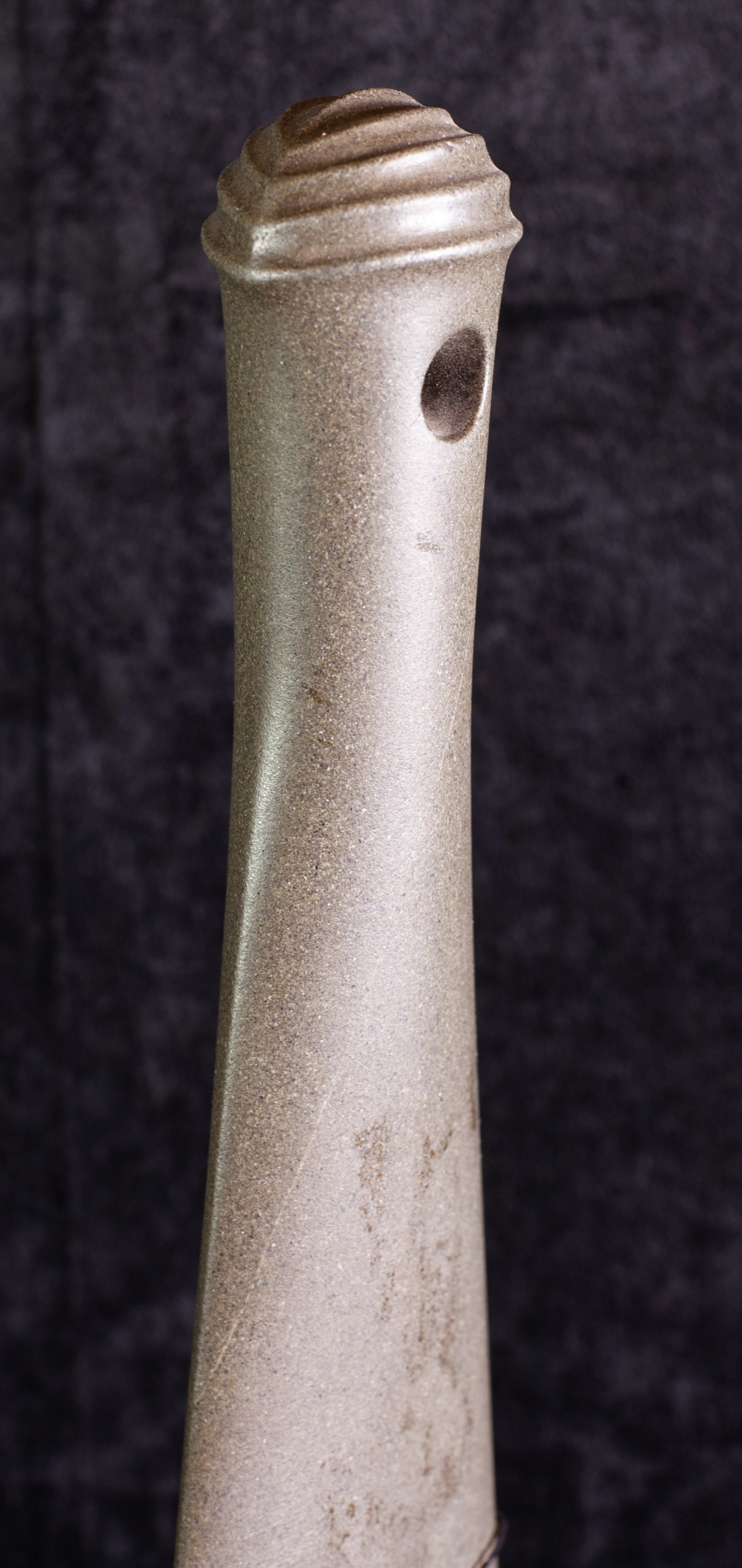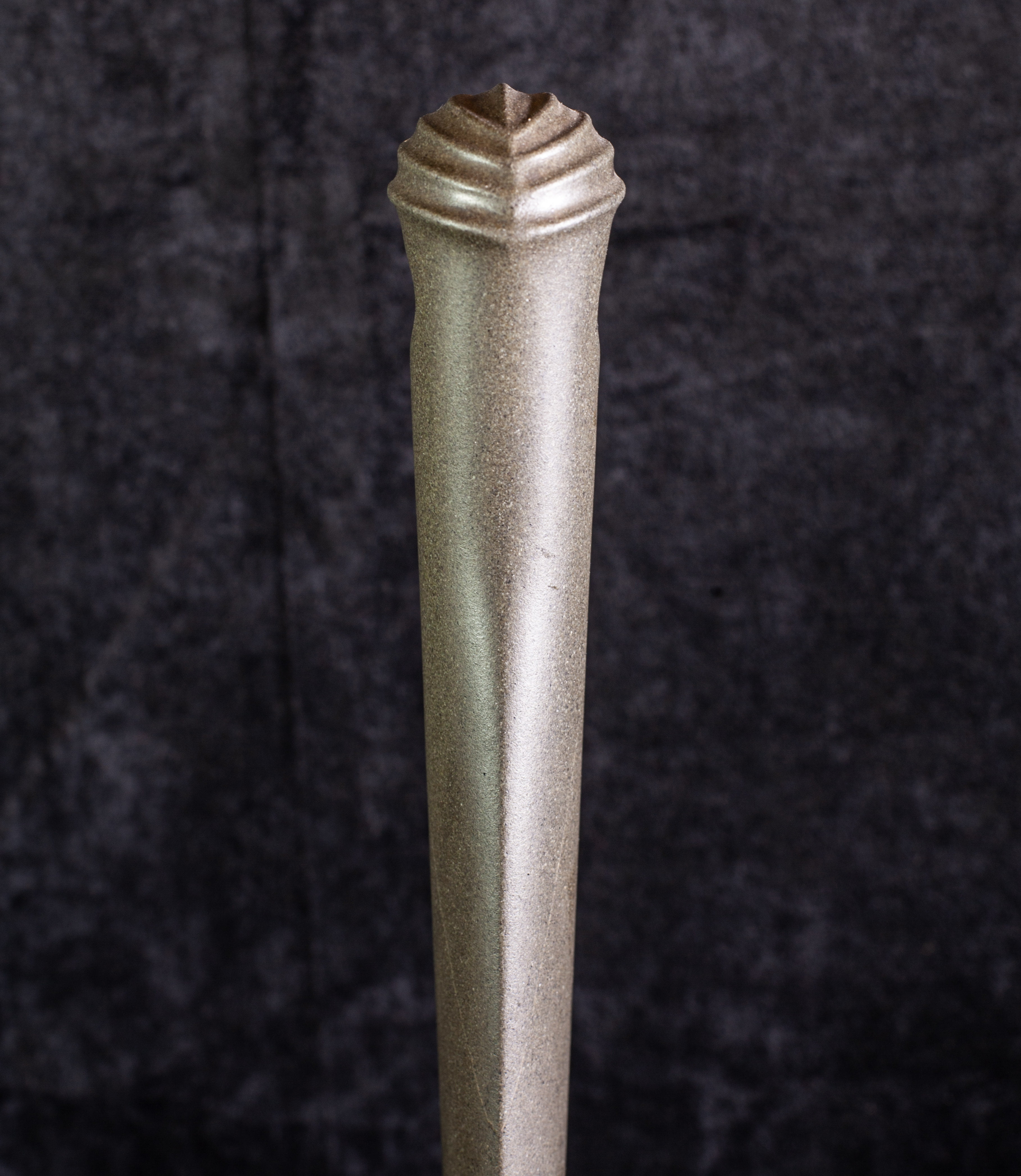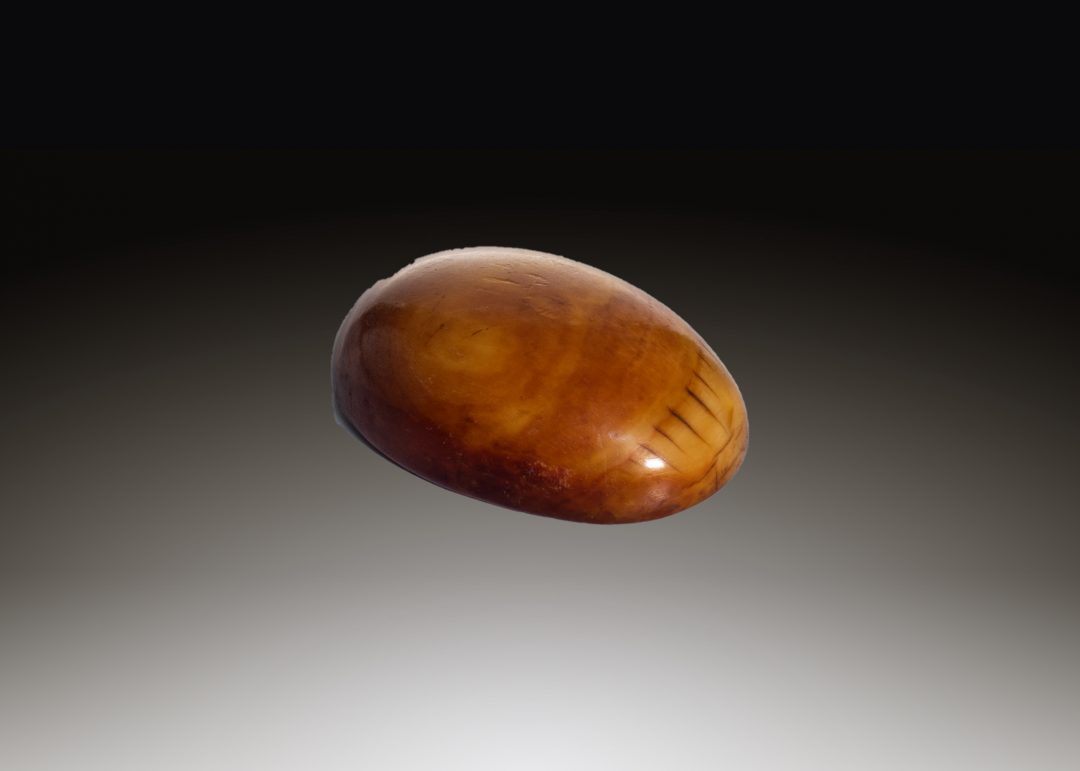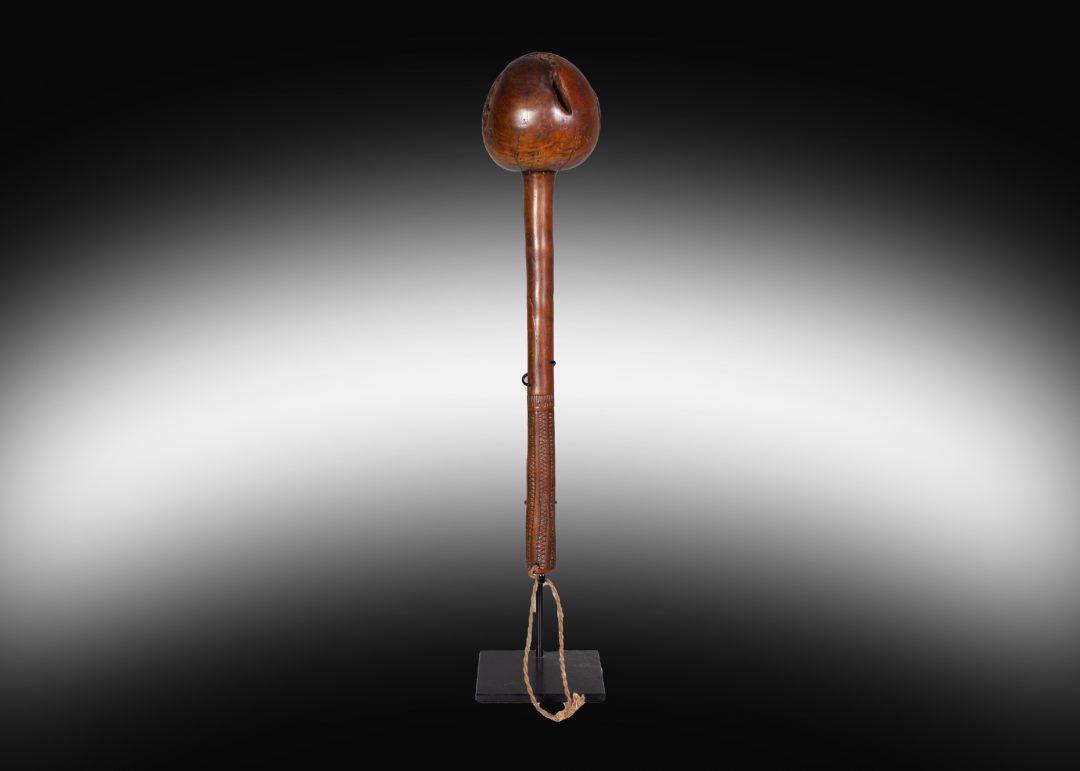Maori Short Club ( Patu Onewa )
- TitleMaori Short Club ( Patu Onewa )
- LocationPort Underwood , New Zealand
- Date18th to 19th century
- Size40cm (L)
- PricePrice on application
Patu is a general term for a club, whilst onewa refers to the greywacke or basalt from which the club is made. They are one of the main weapons that pre-European Maori used. It is a hand weapon that was used to attack the upper body either to the lower jaw, temple or lower ribs. They were also used to hit the head as a mortal blow to a fallen enemy. The smooth and fine finish of this club was achieved after great labour; as Hooper notes, the creation of “the hole for a wrist cord was a particular technical challenge” (Hooper, Pacific Encounters, London, 2006, p. 140). These difficulties were sources of admiration when patu were first encountered by Europeans; Adrienne Kaeppler notes that on Cook’s first voyage “basalt patu were greatly admired because of the work necessary to manufacture them with stone tools.” (Kaeppler, Artificial Curiosities, Honolulu, 1978, p. 190). The form was so well-regarded by Joseph Banks that upon his return to London he commissioned forty brass replicas from the foundry of Eleanor Gyles, intending to take them as gifts on the second voyage (see Coote, “Joseph Banks’s Forty Brass Patus”, Journal of Museum Ethnography, No. 20, March 2008, pp. 49-68).
This is a particularly large example presented on a custom metal stand .
SOLD
Patu is a general term for a club, whilst onewa refers to the greywacke or basalt from which the club is made. They are one of the main weapons that pre-European Maori used. It is a hand weapon that was used to attack the upper body either to the lower jaw, temple or lower ribs. They were also used to hit the head as a mortal blow to a fallen enemy. The smooth and fine finish of this club was achieved after great labour; as Hooper notes, the creation of “the hole for a wrist cord was a particular technical challenge” (Hooper, Pacific Encounters, London, 2006, p. 140). These difficulties were sources of admiration when patu were first encountered by Europeans; Adrienne Kaeppler notes that on Cook’s first voyage “basalt patu were greatly admired because of the work necessary to manufacture them with stone tools.” (Kaeppler, Artificial Curiosities, Honolulu, 1978, p. 190). The form was so well-regarded by Joseph Banks that upon his return to London he commissioned forty brass replicas from the foundry of Eleanor Gyles, intending to take them as gifts on the second voyage (see Coote, “Joseph Banks’s Forty Brass Patus”, Journal of Museum Ethnography, No. 20, March 2008, pp. 49-68).
This is a particularly large example presented on a custom metal stand .
SOLD
